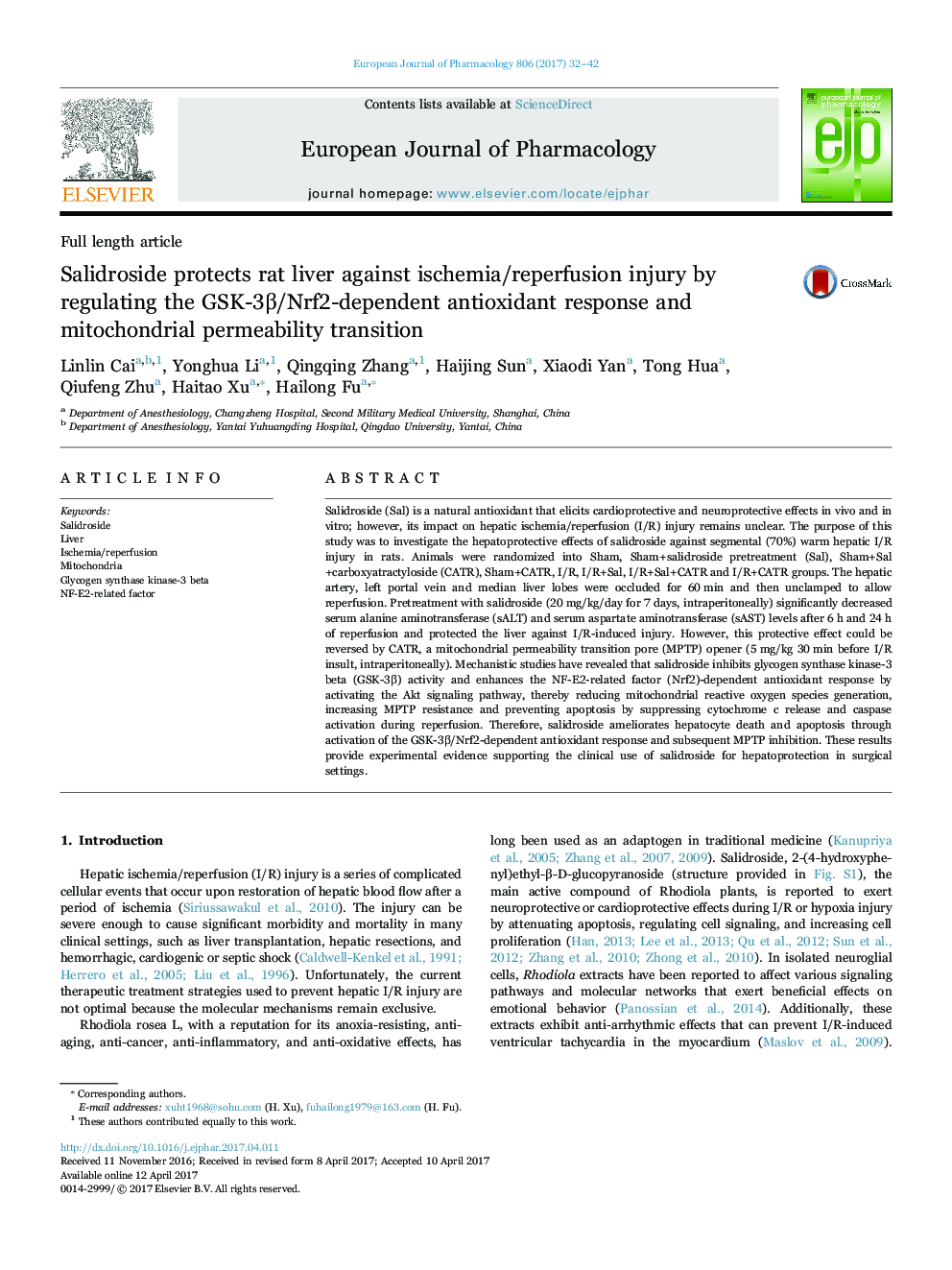| Article ID | Journal | Published Year | Pages | File Type |
|---|---|---|---|---|
| 5554653 | European Journal of Pharmacology | 2017 | 11 Pages |
Salidroside (Sal) is a natural antioxidant that elicits cardioprotective and neuroprotective effects in vivo and in vitro; however, its impact on hepatic ischemia/reperfusion (I/R) injury remains unclear. The purpose of this study was to investigate the hepatoprotective effects of salidroside against segmental (70%) warm hepatic I/R injury in rats. Animals were randomized into Sham, Sham+salidroside pretreatment (Sal), Sham+Sal+carboxyatractyloside (CATR), Sham+CATR, I/R, I/R+Sal, I/R+Sal+CATR and I/R+CATR groups. The hepatic artery, left portal vein and median liver lobes were occluded for 60 min and then unclamped to allow reperfusion. Pretreatment with salidroside (20 mg/kg/day for 7 days, intraperitoneally) significantly decreased serum alanine aminotransferase (sALT) and serum aspartate aminotransferase (sAST) levels after 6 h and 24 h of reperfusion and protected the liver against I/R-induced injury. However, this protective effect could be reversed by CATR, a mitochondrial permeability transition pore (MPTP) opener (5 mg/kg 30 min before I/R insult, intraperitoneally). Mechanistic studies have revealed that salidroside inhibits glycogen synthase kinase-3 beta (GSK-3β) activity and enhances the NF-E2-related factor (Nrf2)-dependent antioxidant response by activating the Akt signaling pathway, thereby reducing mitochondrial reactive oxygen species generation, increasing MPTP resistance and preventing apoptosis by suppressing cytochrome c release and caspase activation during reperfusion. Therefore, salidroside ameliorates hepatocyte death and apoptosis through activation of the GSK-3β/Nrf2-dependent antioxidant response and subsequent MPTP inhibition. These results provide experimental evidence supporting the clinical use of salidroside for hepatoprotection in surgical settings.
